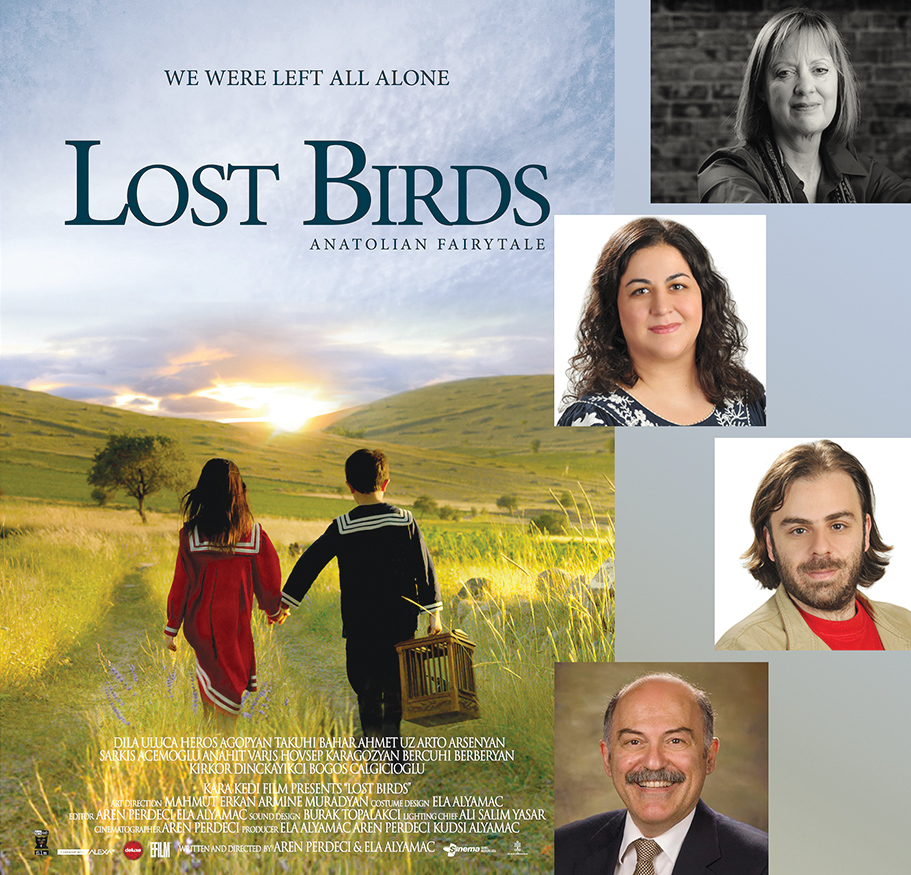
Christine Pambukyan
Staff Writer
Imagine this. Your father was drafted for a war months ago and you are now living in your family home with your grandparents, your siblings, and your mother. Holidays come and go, yet there is no sign of your father. Soon, your grandfather is arrested, and your mother asks you and your siblings to no longer play outside. One day, you sneak out while your mother is not paying attention, happy to finally run in the sun again. Upon returning home, you and your siblings find your house ransacked and your mother and grandmother are no longer anywhere to be found. Tragic stories like this are far too familiar to the children, grandchildren, and great-grand-children of victims of the 1915 Armenian Genocide. Tragic stories like this are captured in the 2015 film, “Lost Birds.”
On Friday, October 30, 2020 at 5:30 PM, CineCulture and the Armenian Studies Program at Fresno State discussed “Lost Birds,” a film that tells the story of Bedo and Maryam, a brother and sister left behind after the Armenian Genocide in 1915, who go on a journey to find their mother along with an injured and lost bird, named Bachik. Those who were interested were able to register in advance to watch the film. After viewing the film, they were able to attend the live Zoom lecture, or view the discussion through the Armenian Studies YouTube channel.
Because the directors, Aren Perdeci and Ela Alyamac were unable to attend the lecture, Dr. Mary Husain, CineCulture advisor and instructor, and Professor Barlow Der Mugrdechian of the Armenian Studies Program were the discussants. First, Dr. Husain began the discussion by urging audience members to go to IMBD’s website and rate the film honestly to combat the anti-Genocide recognition campaign that has falsely given the film poor ratings. Unfortunately, this phenomenon also occurred during the release of the well-anticipated film, “The Promise.”
Next, Prof. Der Mugrdechian gave a background of the directors and explained the purpose of their film. Aren Perdeci, born in Istanbul in 1979, is a director of many short films, commercials, and music videos. In recent years, Perdeci found out that his great grandfather was a victim of the Armenian Genocide, so due to the recent tolerance about the discussion of the topic of genocide in Turkey, he wanted to memorialize his family story through film. His co-director, Ela Alyamac, was also born in Istanbul and studied film direction and film studies at Chapman University in Southern California. Together, along with an entirely Armenian cast, they wanted to make a movie about memories that would inspire survivors of the genocide and their children, grandchildren, and great grandchildren to tell their own stories; showing the human side of exile in the process. Dr. Vahe Tachjian, the director of the Hushamadyan Project based in Berlin, Germany, was an advisor for the film, which contributed to making the costuming, setting, and story as authentic as possible. The directors even filmed the movie in the Armenian Highlands.
Prof. Der Mugrdechian brought attention to the fact that a majority of the film was in Turkish, with a few Armenian hymns and phrases sprinkled throughout. In fact, the directors used Turkish in the film to attract a Turkish audience.
Prof. Der Mugrdechian also explained the structure of the film and its significance to Armenian history. For instance, the film begins with a happy family in a nice village and a warm portrayal of the celebration of Easter. The only thing missing is the father, who has been drafted but has not yet returned. This implies that World War I is occurring, and the Armenian Genocide has already begun. Additionally, in the second part of the movie, the film shifts to a darker, more panicked tone, especially when the grandfather was arrested and taken away along with the rest of the men in the village. Also, the use of music plays a large role in the film. In fact, the directors use an Armenian hymn, “Der Voghormia,” at intense and sad moments of the film, especially when Maryam is separated from her brother.
Overall, the film was authentic, utilizing beautiful metaphors and music, and was a great way to introduce the topic of the Armenian Genocide through a more humane point of view.
As part of the discussion, viewers were able to ask Prof. Husain and Prof. Der Mugrdechian questions about the film through the question-and-answer function on Zoom. A recording of the discussion can be found on the Armenian Studies YouTube Channel.
 Hye Sharzhoom Armenian Action
Hye Sharzhoom Armenian Action